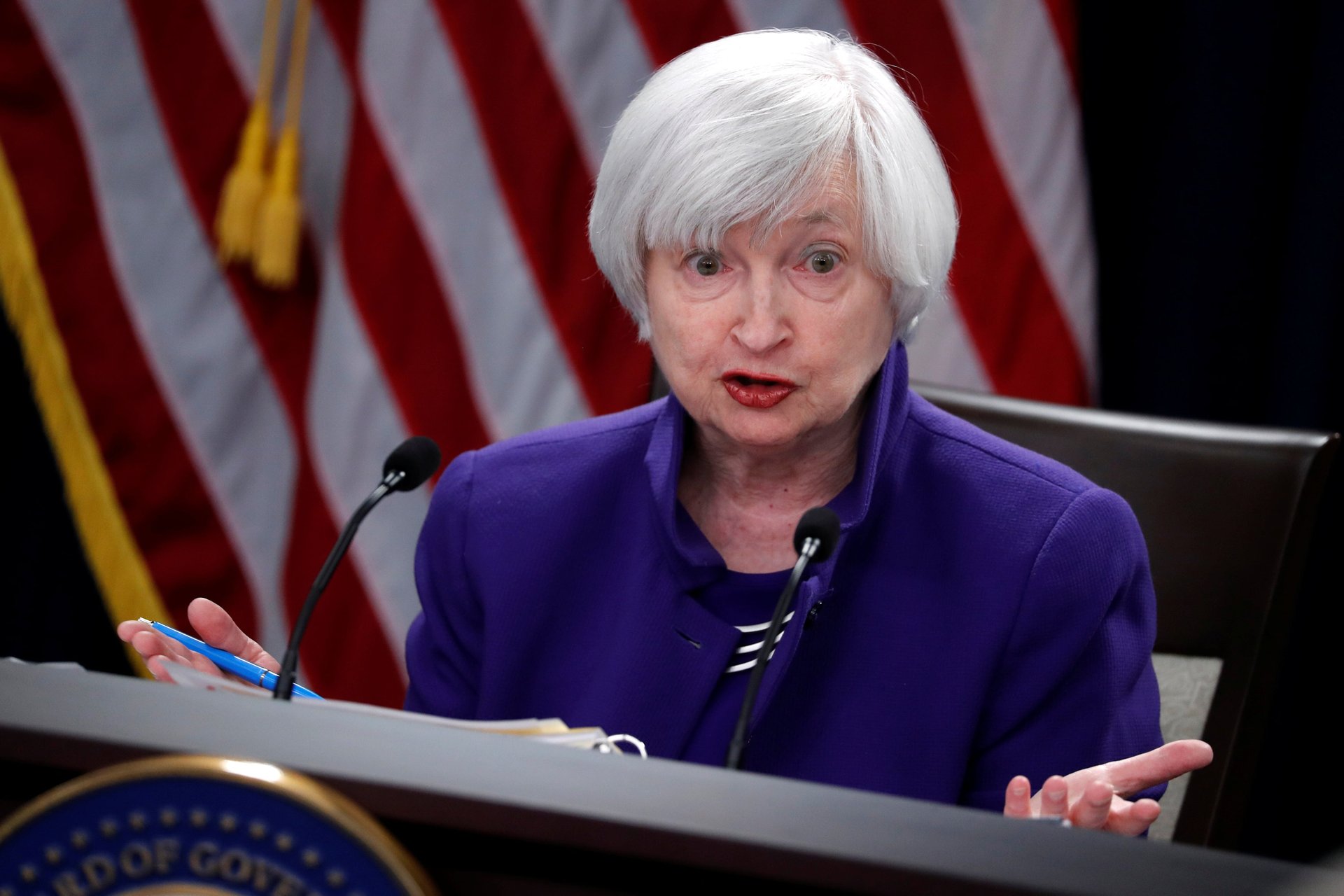Janet Yellen says the US trade deficit is likely to get even bigger. Here’s why she’s right
Donald Trump’s America First economic policies are designed to shrink the US trade deficit. But according to Janet Yellen, the former chair of the Federal Reserve, the deficit is on track to get bigger by the end of 2018.


Donald Trump’s America First economic policies are designed to shrink the US trade deficit. But according to Janet Yellen, the former chair of the Federal Reserve, the deficit is on track to get bigger by the end of 2018.
Speaking at a conference in Beijing, Janet Yellen said that the steady rise in US interest rates is pushing up the value of the dollar, which will likely cause the US trade gap to widen further, according to Bloomberg (paywall).
If she’s right, that’s glum news for Trump, who’s claimed that his economic policies are already bearing fruit based on a narrowing of the deficit in the first half of 2018.
However, despite Trump’s earlier optimism, it seems pretty likely that the trade deficit will close out 2018 wider than it was in 2017. The trade balance hit $593 billion in the 12 months that ended in September, up from $537 billion during the same period a year earlier.
Why has the US trade gap kept worsening despite Trump’s attentions?
One possible reason is that it will take time for the president’s policies to discourage imports and boost US exports. But Yellen argues the real issue is that he’s fighting the wrong beast.
Trump has so far focused on confronting what his administration deems unfair trade practices, erecting trade barriers against countries like China—ostensibly to offset the benefits of these tactics, or possibly to compel the countries to abandon the practices (the administration has never made its rationale all that clear). In her remarks in Beijing today, Yellen offered an implicit rebuke of this logic.
“I do not see unfair trade practices in China, or anywhere else in the world, as what is responsible for the US trade deficit,” said Yellen. “The US trade deficit reflects the fact that Americans spend more than we produce, and we import excess goods and services from the rest of the world to satisfy that demand.”
In other words, other factors influence America’s trade balance more than protectionism.
For one thing, the rise of US interest rates relative to those elsewhere is likely putting pressure on the dollar’s value. Since a stronger dollar gives American businesses and consumers more bang for their buck when buying foreign goods, imports are likely to keep climbing. At the same time, the dollar’s increased exchange rate makes US goods and services pricier than those of foreign competitors—and will therefore discourage exports.
This dynamic, said Yellen, “is part of why we may get a larger trade deficit,” according to Bloomberg.
Ironically enough, the president’s fiscal stimulus is also widening the deficit, as we’ve explained in the past.
The combination of tax cuts and increased spending has juiced demand. And since it takes time for domestic businesses to expand to meet said demand, imports have surged at a faster pace than exports.
Beyond that, though, the trade balance reflects the fundaments of an economy—namely the ratio of savings and investment. To shrink the trade gap, Trump’s policies need to encourage a higher rate of savings or a lower rate of investment. But as the trade data suggest, his tax cuts and budgets policies are doing just the opposite.